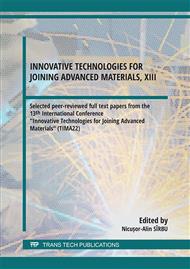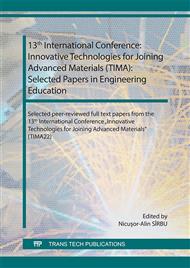Analysis of Digital Training Methodologies
Abstract:
This article consists in an analysis of different training methodologies obtained through research and evaluating the main methodologies in use in the field of steel structures. It starts with a state-of-the-art of to the cutting-edge digital teaching and learning techniques and tools for delivering innovative higher education and training in steel structures. A balance analysis was performed, with pros and cons being considered, to select the best methodologies for microlearning. It is also aim of this task to evaluate the requirements on digital tools and digital training methodologies in the field of steel structures. Also, it aims at collecting feedback on expectations and future career perspectives from teachers and trainers on the possible improvements they can get with the application of Digital Training Methodologies. To start, it is important to understand which tools are the most relevant to give high quality digital teaching. For almost all teachers and trainers the presentation instruments and online communication tools are considered the most important tools. In term of the topics that are important to address in terms of digital training the results have indicated the following: the identification of online fake content and information as well as cybersecurity matters, the ability to respect the others in a “always connected environment”, creation of digital content and the use of digital tools to solve the problems. Additionally, to the previous identified topics, and in order to improve the learning process and making it faster it is important to understand what makes online learning resources and content useful, for that, and through the analysis of the questionnaires results, it was observed that having interactive resources, easy to use, with high quality and relevant contents, that are designed to address the needs of the learners, it can be obtain a better learning process. The analysis of research carried out for this article, allowed to conclude that having interactive resources, easy to use, with high quality and relevant contents, that are designed to address the needs of the learners, it can be obtain a better and fast learning process.
Info:
Periodical:
Pages:
19-34
Citation:
Online since:
September 2023
Keywords:
Price:
Сopyright:
© 2023 Trans Tech Publications Ltd. All Rights Reserved
Share:
Citation:



